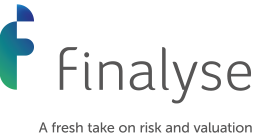How Finalyse can help
The alternative SA will be required under FRTB in 2021. Are you on track?
The regulatory landscape for IRRBB is rapidly changing. Are you up to date?
Agile and comprehensive assessment, measurement and management of your market and liquidity risks
By Maria Nefrou, Managing Consultant, Yuan-Yow Wu, Consultant, and François-Xavier Duqué, Principal Consultant.
Introduction
This article discusses the impact of increasing interest rates on Asset and Liability Management (ALM), along with best practices for a more effective ALM, whilst also leveraging the recent case of Silicon Valley Bank (SVB).
Asset and Liability Management (ALM)
Asset and Liability Management (ALM) is about managing risks arising from a mismatch between assets and liabilities on a financial institution’s balance sheet while having sufficient capital and liquidity to meet their obligations to various stakeholders. Strategies over ALM include a combination of financial planning and risk management to increase efficiency and profitability while reducing long-term risks arising from market changes.
ALM addresses a broad spectrum of risks, predominantly interest rates, and liquidity.
A brief history of recent Interest Rates evolution
The global financial crisis of 2008 and an unprecedented pandemic in 2020 put global markets in high distress. To prevent a recession and stimulate economic growth, central banks forced interest rates to historically low levels, as lower financing costs could encourage borrowing and investing.
Low-Interest rates persisted for more than a decade. Expectations of banks and insurers were shaped by authorities who made sure to signal that interest rates would remain low in a continuous effort to maintain stable economic growth. This inspired investment strategies that integrated a.o. more long-term illiquid assets chasing higher yields – “Yield Hunger Games!”
Naturally, rates could not stay at such levels forever.
A steady increase in inflation commenced in mid-2021 and accelerated throughout 2022. With the pandemic crisis shifting demand to goods (versus services) and affecting supply, governments and central banks easing the monetary effects of the pandemic, and the Russian invasion of Ukraine affecting energy supply and prices, prices for goods have been continuously increasing, impacting purchasing power.
High inflation in the Eurozone prompted the European Central Bank to raise interest rates in July 2022 by 25 basis points for the first time in 11 years, reaching cumulatively 200 basis points by November 2022. The Fed followed a similar pace in the United States.
This interest rates evolution from a long period of low (and even stagnant) interest rates to a new period of increasing rates has formed the following investment environment:
- For insurers – The investment model of insurance companies usually includes long-term liquid assets for covering future liabilities. In a long period of low rates, many insurers shifted their investment strategy to long-term illiquid assets to profit from higher yields, reducing flexibility in adjusting their investments according to new markets conditions.
- For banks – Low-interest rates eased debt financing, especially for long-term assets with low and stable rates, such as mortgages. Banks are now stuck with low-yield products. On the funding side, increasing rates create the necessity to calibrate products offering attractive yet competitive new products for investors.
- For individuals – Markets experiencing a steady growth, partly fuelled by cheap debt and easy equity financing, accelerated new businesses especially in the technological sector. Markets imploding at the start of the pandemic, resulted in affordable stock prices. Cash availability due to low consumption in the course of the pandemic, turned a large range of investors to the stock market. The tech industry, the majority of which sits in Silicon Valley, attracted a large share of investments, generating large volumes of cash in the recent years.
The Silicon Valley Bank (SVB) case
Silicon Valley Bank (SVB) was the 16th largest bank in the US and the largest bank by deposits in Silicon Valley, holding most deposits for nearly half of all venture-backed tech start-ups.
With its majority of customers generating large volumes in the recent years, as the tech industry roared, SVB concentrated large deposits with no business deposits insurance, exploding the liabilities side of its balance sheet. To balance their assets side, banks would traditionally invest deposits (partly) by providing lending to its customers, something that SVB customers did not particularly need. SVB decided to invest in long maturity US Government Bonds and Mortgage-Backed Securities, instead, which are highly sensitive to rising interest rates.
What went wrong?
SVB intended to hold its long-term bonds investment to maturity, valuing these assets at amortized cost. Meantime, the bank entered into Interest Rate Swaps (IRS) to hedge its interest rate position. When rates started slowly increasing, SVB saw an opportunity to profit by terminating the IRSs, in anticipation that rates will cease to further increase, leaving its bonds interest rate position unhedged. As interest rates rose further throughout 2022 and 2023, its bonds portfolio lost significant market value.
In addition, a large drop in the US stock market in 2022, along with rising inflation, put the technological sector at a stall after 2 years of growth, increasing the demand of large techs to draw on their deposits.
The bank was obliged to liquidate assets to meet its obligations, taking big losses in its books. This marked the beginning of a bank run and a resulting liquidity crisis that led to the bank’s failure.
Overall, the bank’s ALM strategy appeared with several flaws. In particular,
Maturity Mismatch
Maturity mismatches on the balance sheet create interest rate gaps and liquidity mismatches. Large differences in the horizon at which assets and liabilities are rolled or their return repriced create an interest rate gap that exposes the market value of the balance sheet to interest rate fluctuations. A liquidity mismatch also arises when short-term liabilities exceed offsetting short-term assets. Under the sentiment that interest rates would evolve at a slow pace and that its deposit base was solid, SVB invested heavily on long-term assets intended to be held to maturity, creating a big mismatch versus its much shorter term sizable (and ultimately unstable) liabilities.
Deposits Concentration
SVB’s business model was highly focused on clients within one single industry, with the majority being some of the largest players in the sector. With the tech industry meeting great success during the pandemic, the bank received large deposits as a result of the same success story that equally affected all its customers. In the event of an adverse hit to the sector, the bank would soon be forced to meet its obligations at once, for the majority of its customers, and in this case, for large volumes.
The Network Effect
Rumours spread fast, for better or worse. SVB’s customers were organized in closed networks communicating with each other about potential risks run by the bank in light of changing market conditions. Under a common sentiment and assumptions, many customers copied each other’s action of withdrawing deposits, and no bank is designed to survive a mass withdrawal of deposits of that size.
It is important to highlight the extent of reputational damage in the technological age, and how imperative it is to ensure that the risk practices help preserve the trust of the public.
Regulation and Supervision
The supervisory authorities require that banks measure and manage their liquidity risk particularly through stress scenarios, taking into account different time bands as well as crisis conditions with various (including extreme) stress scenarios.
Many US banks with similar size and activities to SVB were outside of the regulatory scope. However, SVB did not go under the radar of supervisory authorities. The bank was repeatedly called out on its risk management practices, and its failure to follow adequate procedures was made known to the regulator.
Actions taken by US Government
The US Treasury soon announced that it will intervene and provide insurance even for the non-insured assets for the first time in history. Additionally, a new lending facility (a funding program) was launched by the Fed, which will allow banks to post good quality assets as collateral and be able to borrow on favourable interest rates. Banks will be eligible for loans that are equal in value to the face value of the securities they pledge. The borrowing rate on that cash will be fixed at the “one-year overnight index swap”, a market benchmark for one-year risk-free interest rates, plus 0.1%.
Robust Asset and Liability Management
The objective of ALM is to manage the mismatch of assets and liabilities within risk appetite while ensuring sufficient liquidity and capital to meet its obligations.
To that end, risk frameworks should ensure that financial institutions fulfil the following duties:

Liquidity Risk Management
As observed from SVB, liquidity is the lifeline of financial institutions, as blood is to humans. The pursuit of additional returns is not sustainable without ensuring there is a robust liquidity management strategy. Banks and insurers need to clearly understand the contractual and behavioural liability profile against their assets across different internally defined scenarios.
It is market practice - and a standard procedure for banks under the IRRBB pillar 2 rules - to make a distinction between the stable and unstable components of sight deposits (a.k.a. Non-Maturity Deposits). A distinction also needs be made between retail and wholesale activities with the recognition that the latter is inherently more instable. An appropriate measure of “liquidity-at-risk” should enables financial institutions to anticipate potential funding gaps and thereby maintain adequate liquidity buffers, ensuring sufficient liquidity is held through periods of stress.
In SVB’s case, there were not enough liquidity buffers and contingent liquidity to cover both the mark-to-market movements of their bond portfolio and the withdrawal of deposits.
Additionally, market risk management is another major component that impacts liquidity, which is discussed below.
Market Risk Management, including concentration and counterparty credit risks
Market Risk management and Liquidity Risk management are closely related. Investment into assets creates a liquidity strain. This strain can be exacerbated if the assets do not offset the risk characteristics of the liability, for example in terms of underlying currency, repricing profile, market liquidity. Behavioural features as prepayment or early redemption may also drive a wedge in the balance sheet.
From an ALM perspective, market risk management aims at mitigating the market risk profile generated by the transformation of liabilities into assets. This can be done by:
- Matching as closely as possible the market risk created by assets and liabilities inside the financial institutions
- Hedging out residual exposure (e.g., the long term fixed-rate risk associated with the treasuries bought by SVB)
- Determining potential liquidity requirements resulting from market or counterparty risks ( e.g. potential collateral margin calls associated with ALM hedges)
Risk limits for concentration and counterparty credit risks need to be monitored properly. Without sufficient diversification, there is a real risk that hedging activities will fail due to counterparties not being able to fulfil their obligations.
Another mechanism to influence both market risk and liquidity risk management consists in embedding the cost of liquidity into the funding management.
Embedding cost of liquidity into funding management philosophy
A robust implementation of fund transfer pricing (FTP) can help with both liquidity and market risk management at financial institutions.
FTP, also commonly known as cost of funds (CoF) or internal funds pricing (IFP) establishes an internal reference against which the profitability of different transactions, products and business lines can be compared, by attributing the proper costs and benefits for users and providers of funds and liquidity.
By embedding the cost of liquidity, an FTP framework will incentivise or disincentivise funding of various terms depending on the liquidity profile of the company – both from a funding provider and funding user point of view. Additionally, the cost of hedging and market risk management can also be passed through FTP.
In SVB’s case, if the real cost of long-term funding had had been passed on to the investment business lines, FTP may have disincentivised the unhedged investment into long-term bonds. Additionally, FTP could have encouraged longer-term liability origination.
Optimise ALM by centralizing all funding activities within a centralized treasury
To optimize both the cost and effectiveness of market and liquidity risk management, it’s important to centralize all funding activities within a treasury function. Benefits include:
- A centralised view of all sources and uses of liquidity
- Allowing the offsetting of risks at a consolidated level where only the residual risks need to be hedged
- Provision of better management information to ALCO, enabling informed decisions making
Governance
An Asset Liability Committee (ALCO) must be in place to assist and supervise ALM activities and define optimal strategic planning that fits the institution’s risk appetite. More particularly, the ALCO must:
- ensure adequate liquidity while managing the bank's balance of cash inflows vs. outflows
- ensure the existence of and approve a contingency plan
- ensure the existence of a compound funding policy which covers a variety of needs and sources of assets or liabilities (fixed/floating rate funds, wholesale/retail deposits, etc.)
- review and approve the liquidity and funding management policy on a regular basis
Conclusion
ALM matters!
The 2008 financial crisis, the unprecedented global health crisis, and the unfolding geo-political events remind us that the only certainty is an unpredictability. Ultimately, it remains a vital responsibility of financial institutions, their management and decision boards, to ensure the deployment of best practices aiming at protecting the interests of their shareholders and customers.
ALM plays a central role here. As illustrated in the Silicon Valley Bank story, managing the mismatches between assets and liabilities, both in terms of interest rate and liquidity risks, is key to maintain a healthy balance sheet. A robust ALM framework relies on an array of dispositions, from adequate risk measurement systems, realistic and comprehensive stress tests, risk appetite definition and limit monitoring, to contingency planning and governance. These are all areas where Finalyse is proud to bring value to its clients.
Finalyse InsuranceFinalyse offers specialized consulting for insurance and pension sectors, focusing on risk management, actuarial modeling, and regulatory compliance. Their services include Solvency II support, IFRS 17 implementation, and climate risk assessments, ensuring robust frameworks and regulatory alignment for institutions. |

Trending Services
Risk Data Analyser
#Regtech
#DigitalTransformation
Risk Appetite Framework for Insurance
#RiskAppetite
#InsuranceRisk
IFRS 17 implementation
#IFRS17
#InsuranceAccounting
Finalyse BankingFinalyse leverages 35+ years of banking expertise to guide you through regulatory challenges with tailored risk solutions. |

Trending Services
AI Fairness Assessment
#ResponsibleAI
#AIFairnessAssessment
CRR3 Validation Toolkit
#CRR3Validation
#RWAStandardizedApproach
FRTB
#FRTBCompliance
#MarketRiskManagement
Finalyse ValuationValuing complex products is both costly and demanding, requiring quality data, advanced models, and expert support. Finalyse Valuation Services are tailored to client needs, ensuring transparency and ongoing collaboration. Our experts analyse and reconcile counterparty prices to explain and document any differences. |

Trending Services
Independent valuation of OTC and structured products
#IndependentValuation
#StructuredProductsValuation
Value at Risk (VaR) Calculation Service
#VaRCalculation
#RiskManagementOutsourcing
EMIR and SFTR Reporting Services
#EMIRSFTRReporting
#SecuritiesFinancingRegulation
Finalyse PublicationsDiscover Finalyse writings, written for you by our experienced consultants, read whitepapers, our RegBrief and blog articles to stay ahead of the trends in the Banking, Insurance and Managed Services world |

Blog
Finalyse’s take on risk-mitigation techniques and the regulatory requirements that they address
Regulatory Brief
A regularly updated catalogue of key financial policy changes, focusing on risk management, reporting, governance, accounting, and trading
Materials
Read Finalyse whitepapers and research materials on trending subjects
Latest Blog Articles
Contents of a Recovery Plan: What European Insurers Can Learn From the Irish Experience (Part 2 of 2)
Contents of a Recovery Plan: What European Insurers Can Learn From the Irish Experience (Part 1 of 2)
Rethinking 'Risk-Free': Managing the Hidden Risks in Long- and Short-Term Insurance Liabilities
About FinalyseOur aim is to support our clients incorporating changes and innovations in valuation, risk and compliance. We share the ambition to contribute to a sustainable and resilient financial system. Facing these extraordinary challenges is what drives us every day. |

Finalyse CareersUnlock your potential with Finalyse: as risk management pioneers with over 35 years of experience, we provide advisory services and empower clients in making informed decisions. Our mission is to support them in adapting to changes and innovations, contributing to a sustainable and resilient financial system. |

Our Team
Get to know our diverse and multicultural teams, committed to bring new ideas
Why Finalyse
We combine growing fintech expertise, ownership, and a passion for tailored solutions to make a real impact
Career Path
Discover our three business lines and the expert teams delivering smart, reliable support


